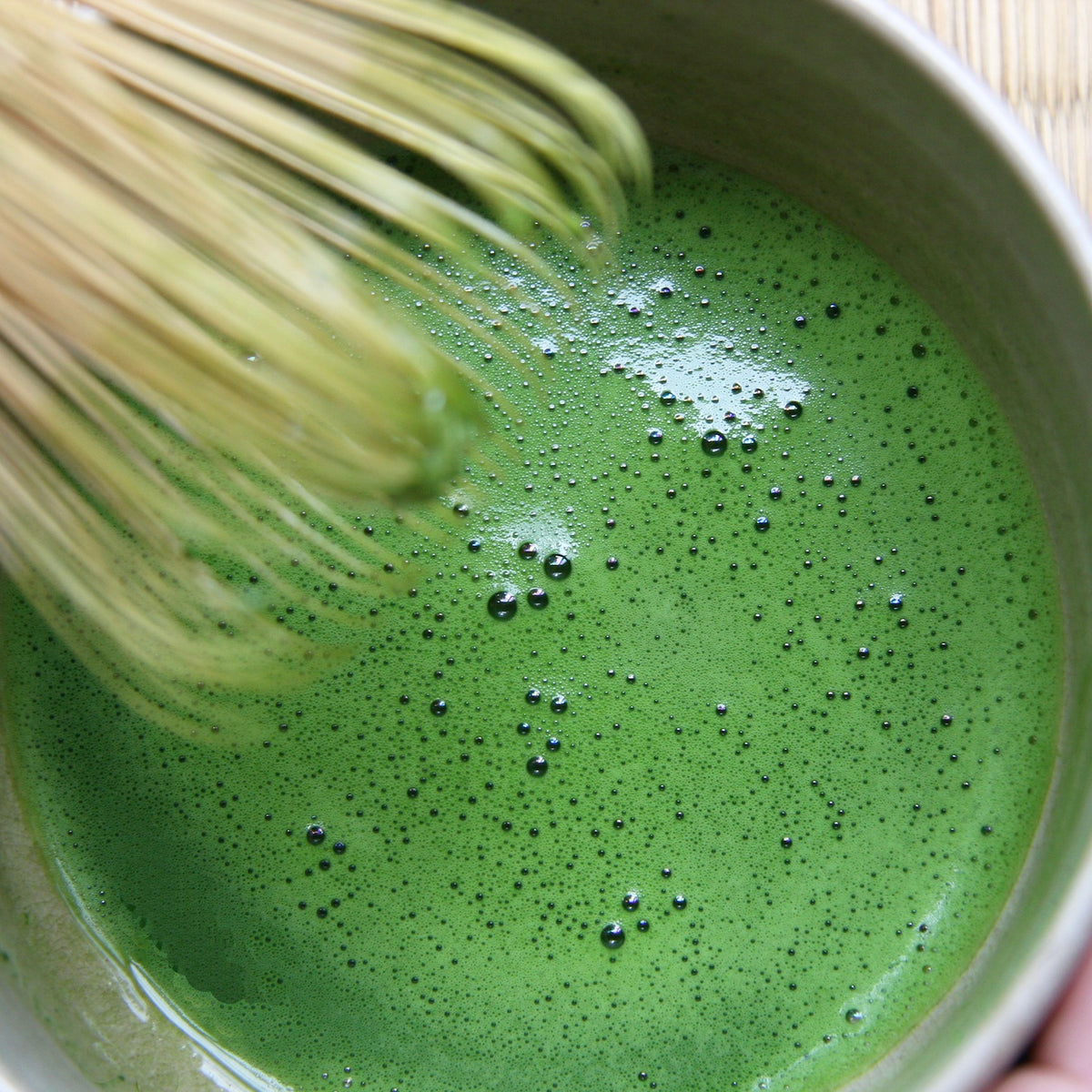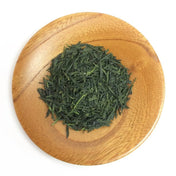German matcha consumption began picking up along with the foodie trend around the year 2012. Additionally, in the last four to five years Netflix and television shows have piqued people’s interest in coffee, with popularity of tea eventually following suite. In terms of hot, non-alcoholic drinks, Germany is typically thought of as a coffee drinking culture, which assuredly pairs quite well with a thick piece of chocolate cake or apple strudel. But they also have a long folk history of making plant infusions and they are also the largest importer, consumer, and processor of medicinal and aromatic plants in Europe.
According to the International Tea Committee, Germany stands out as the number one importer of tea in Europe and their tea consumption remains relatively stable over the years. Notably, the German Tea & Herbal Tea Association based in Hamburg reported tea consumption (both Camellia sinensis and herbal and fruit infusions) grew by 2 liters in 2020 to a record of 70 liters per capita. Further, although industry experts indicate black tea remains the most popular type of tea in Germany, the market share for green tea has increased significantly in recent years from 24.5% in 2013 to 29% in 2014 (CBI, Ministry of Foreign Affairs). More recently, the EU as a whole has seen a drastic increase in the amount of green tea imported between 2020 and 2021, 635 to 835 tons (Note: This spike may have been partly due to the pandemic as numbers have decreased to 789 tons in the year 2022; Ministry of Agriculture, Forestry and Fisheries). Last year, Germany’s tea association reports on tea consumption showed matcha to be the fastest growing sector within tea. We therefore set out to find out what is going on with matcha consumption in Germany, how the matcha is being used, and who is eating and drinking it.
Ana Skarjak is manager at Paper & Tea GmbH, a respected and established tea shop first established in Berlin 11 years ago and now with additional stores across Germany and scattered across Europe. Ana commented to me that there appears to be two main groups of matcha consumers in Germany. First, there are the consumers who she refers to as the matcha people. These are the ones who have gone down the “rabbit hole” in tea. While they may start out with black or Chinese teas, Ana shared that these tea aficionados will eventually find themselves curious about Japanese tea, which of course leads them to matcha. This trend parallels the recent historical trends in German tea consumption, especially following the fall of the Berlin Wall in 1991 and the global role in business that has perhaps enabled a cosmopolitan explosion in interest in international culture.
The popularity of matcha is also catalyzed by educational seminars and marketing, effectively and strategically carried out by companies such as P&T. Although Ana touched on the fact that marketing is a whole different topic; at P&T, they emphasize the importance of tasting good quality matcha as well as using the appropriate tools in the matcha making process (e.g., a sieve to prevent clumps ). Their company has clearly been successful at providing seminars that educate consumers about the preparation of matcha. Ana also pointed out the importance of finding a middle ground in their educational material. That is, they want to honor the traditional Japanese matcha ceremony but at the same time, they are careful not to overemphasize the formality and structure of it, making it more accessible and approachable for the European audience. This approach is also reflected by owners Florian Rosch and Sandra Wenzl of Matcha Shop (established in 2011 in Berlin) who utilize social media in order to spread and make accessible the wide-ranging appeal of Matcha that is not only a drink. They not only demonstrate matcha whisked in bowls, some of their matcha drinks will be adorned with small butter cookies, and creative matcha recipes such as lemonade sprinkled with matcha and matcha brownies with sweet potato. Simply because there is no rule with respect to how one enjoys their matcha!
Then, there is the second group of consumers who land directly on matcha. These include health-conscious consumers who are pulled to matcha due to health and wellness purposes. As many Westerners may already be aware, matcha is considered a superfood overseas especially with its bright green color full of catechins and vitamins. Sandra of Matchashop has commented in a previous interview (Taste of Japan), “Matcha has the effect of refreshing the mind and waking you up with a shot of vitality. Maybe for that reason we get regular orders from those in the medical profession, yoga schools and so on”.
In this health awareness realm, matcha may be consumed as a powder pill, similar to spirulina. It also appears that matcha is an ingredient used in power snacks or healthy snack alternatives, along with many other superfood ingredients. What is more, thanks to Germany’s big wave of veganism and health food, matcha can even be found in trendy vegan/vegetarian restaurants. Many people seem to be attracted to the vitamins, antioxidants and healthy energy boost and enjoy matcha smoothies or matcha powder drinks. Others substitute matcha for other, less healthy products. For example, instead of the standard sodas one finds at fast food restaurants, in these hipster hangout spots, one may encounter matcha fizzy drinks such as Carpe Diem Matcha or BioZisch (matcha flavor). An online description of Carpe Diem Matcha reads, “When Matcha combines with Nashi pear and ginger, not only the tongue tingles but also the mind - so intensely that even the last taste buds dance Matcha-cha. Or just: tea. Very, very different”
 A few matcha drinks that are accessible in Germany. Not limited to Berlin. Images are from a friend in Leipzig, Germany who kindly did some investigation for me.
A few matcha drinks that are accessible in Germany. Not limited to Berlin. Images are from a friend in Leipzig, Germany who kindly did some investigation for me.
Would that make you want to drink Carpe Diem Matcha? Although one informant commented these bottled drinks resemble dirty pond water it was unclear if that was meant as an insult or a complement! Notably, part of the healthy matcha craze may be concentrated in Berlin, known as an international, hip place with matcha cafes and matcha bars. For example, there is Matchasome, which is the very first dedicated matcha cafe in the heart of Berlin. Some of their offerings include healthy (and happy! Happiness seems to be a key connection that they make to matcha consumption) matcha drinks as well as homemade baked matcha pastries. It may be worth mentioning that all of their matcha products are made with their very own ceremonial grade Matcha, which comes from a single estate organic tea farm in Kagoshima Prefecture. Moreover, they only use first-flush harvested tea, even in their baked goods.
Matcha consumption is expected to grow continuously in the coming years, suggesting that Berlin is setting the trend rather than an anomaly. The projected popularity of matcha (that is forecasted to grow on the global market at a compound annual rate of 10.9% between 2022 and 2030, EMERGEN Research) is owing to the fact that matcha consumption and usage is still relatively uncommon throughout Europe but interest from both the health-conscious consumers and tea aficionados is expected to continue at a rapid rate. Interestingly, after the Great tsunami and Earthquake (March 11th, 2011), German consumers did not want Japanese tea that had not been tested for radioactivity. Yet, provided that both Europe and Japan are very strict when it comes to testing the safety of foods and given that over a decade has passed since the tsunami and nuclear plant meltdown, consumers no longer seem too concerned about radioactivity testing. Research investigating the matcha tea products available on the German market indicates the addition of 165 new products in the last five years (MINTEL 2016), with much of the growth occurring in recent years. For a striking contrast, the period between 2008-2013 there were only three products with matcha tea powder. If one looks carefully in the major cities in Germany, one will notice consumers and shops experimenting with matcha-lattes, matcha affogato (matcha and ice cream), matcha smoothie drinks, instant matcha latte and there are reports of matcha cakes being spotted at cafes and bakeries. These data suggest that trends will continue to increase such that you may even be lucky enough that a coworker brings in a matcha tiramisu to share!
Matcha tiramisu! When I lived in France, my friend who was aspiring to be a bread maker and baked fancy desserts told me he previously made an exceptional matcha tiramisu. So yes, baked matcha goods are on the rise not just in Germany but in several countries across Europe.
For these avid matcha German drinkers, it appears that their affinity for Japanese culture draws them to matcha but that they are not too picky when it comes to terroir. This is surprising given the fact that these same Japanese tea consumers at P&T are particular about terroir loose leaf teas. On the contrary, Ana shared that the matcha can be from any part of Japan, although they are looking for good quality (depending on use: ceremonial, daily, and culinary matcha are the matcha types offered at P&T), and perhaps, most importantly, one that is organic. The majority of tea companies in Germany rely on the major tea companies in the global market (e.g., AIYA, the biggest importer of Japanese teas to Europe) for matcha and these companies make their own blend. Of course, the nerdier tea consumers will go out of their way to seek out matcha from a particular region, cultivar or producer, but this is rare, even in Japan. The general population of tea consumers are simply happy with a good quality organic matcha and stick to it without much experimentation.
Interestingly, although the German consumers are not going through the entire traditional tea ceremony, Ana shared that the matcha drinkers she knows actually have their own matcha set and pseduo ritual, which includes their own chasen, chawan and chasuku. However, here is where the difference emerges. The typical way matcha is had in Germany is generally through a speedy morning ritual at home. Whisk the bowl of matcha and take it in with a few sips like an espresso shot. Indeed, for a handful of people, it appears that the matcha has replaced their morning coffee. I’d like to imagine the morning ritual matcha drinkers appreciating the peaceful green color of matcha, or delighting in the Zen, awake state that is experienced with it, which differs from the effects of coffee. A multi-hour formal ceremony would of course not fit very well into the 5 minute before-going-to-work window very well anyway!
In contrast to the power morning matcha ritual, another group is interested in slowing down and giving extended attention to their matcha time (tea time and space = cha-no-ma). Whereas currently, matcha generally remains to be an at home quick fix morning routine for many, with the mindfulness trend (i.e., taking the time to be present to enjoy simple activities such as journaling and tea drinking), the matcha consumers in Germany may start to actually take their time to enjoy their bowl of matcha, perhaps even sharing it with friends and company. Ana at P&T comments,
“People are taking their time to do stuff. Talking about slow life. If we look at matcha, this is my vision for the future. I think we will see more attempts at people trying to make matcha the ceremonial way, sharing it maybe, and going deeper into the actual tradition.”
 A mindful matcha moment at Tsuen from Uji, Kyoto Prefecture.
A mindful matcha moment at Tsuen from Uji, Kyoto Prefecture.
If this trend were to be in effect, perhaps in the future, the German matcha consumers may start to be more picky, more nerdy about tea, even starting to be curious about the terroir of matcha. We shall see! In closing, here are some remarks from Ian Chun, founder of Yunomi. While Ian-san mentioned he did not know much specifically about Germany, he looks at tea enthusiasts, who tend to be similar everywhere no matter what their background may be:
[Q] Have you observed any interesting or unexpected trends with German tea consumption? Do you anticipate any there or in other segments of the International market?
Throughout the West, as matcha becomes more familiar as a flavor, I expect it to be incorporated into more and more baked goods and confectionery. I expect more and more cafes will carry a matcha latte as an option on their menu. Essentially this would follow matcha usage in the Japanese market. The main difference would be that matcha would also be more commonly drunk by people in their everyday lives whereas it is not common in Japan outside of practicing the tea ceremony.


